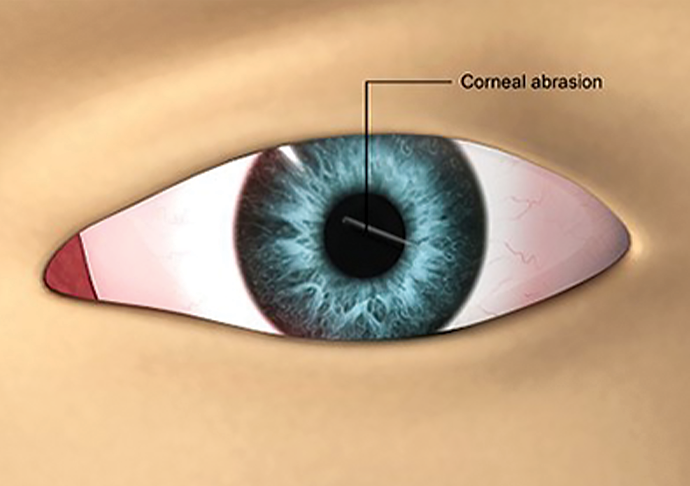Home » VISION CARE » TECH UPDATE » Research on new CL material to treat corneal wounds
Anew contact lens material, acting as a bandage for corneal wounds, is being developed by researchers and doctors at the University of Waterloo, Ontario, Canada. This new material could change the way corneal wounds are treated.


The cross-disciplinary team is from UW’s Centre for Ocular Research and Education (CORE), part of its School of Optometry & Vision Science and the Department of Chemical Engineering. They believe the new material, acting as a bandage for corneal wounds, could release drugs in a controlled manner to help the eye heal faster.
In the present treatment of corneal abrasion, patients wear a clear, oxygen-permeable bandage contact lens for seven to ten days. The bandage is infused with eye drops containing antibiotics. This can make it difficult to ensure enough drugs are administered to the eye to sustain treatment.
The new technology will mean a significant improvement in corneal wound treatment as its targeted-release, drug delivery system, is responsive to the body: The more the injury, the more drugs get delivered. This would make it unique, and, potentially, a game changer, according to Dr Lyndon Jones, a professor at UW’s School of Optometry & Vision Science and director of (CORE).

Collagen, a protein in the eye that is often involved in the wound healing process, is too soft and weak to be used as a contact lens material, the researchers found. Dr Evelyn Yim, an associate professor of chemical engineering at Waterloo University, discovered a way to transform gelatin methacrylate, a collagen derivative, into a biomaterial that is ten times stronger than collagen. The team’s research also found that one unique property of collagen-based materials is that they degrade when exposed to an enzyme called matrix metalloproteinase-9 (MMP-9), which is found naturally in the eye.
These enzymes are very special because they are involved in wound healing. When there is a wound, they are released in greater quantities. If you have a material that can be degraded in the presence of this enzyme, and a drug is added to this material, it can be engineered so that it releases the drug in a way that is proportional to the amount of enzymes present at the wound. Which is how the bigger the wound, the higher the amount of drug released.
The team used bovine lactoferrin in their research. This has shown anti-infective and anti-inflammatory effects as a model wound-healing drug. In a human cell culture study, the researchers achieved complete wound healing within five days of using the drug-releasing, new contact lens material. They also found that the material only becomes activated at eye temperatures, providing a built-in storage mechanism. This research and its bandage material technology, it is hoped, could eventually be used in the treatment of other skin wounds.
The research team members include Dr Evelyn Yim; Dr Chau-Minh Phan, a research assistant professor; Dr Susmita Bose, whose research spearheaded the project; Dr Muhammad Rizwan, a former postdoctoral fellow; and John Waylon Tse, a former graduate student.
The next steps to bringing this new technology into daily practice would require optimising the new material’s properties, specifically modulus, wettability and optical clarity, which are important for contact lens wear. And there are still significant challenges when it comes to integrating small molecular-weight drugs within the material, a crucial area of the ongoing research.
It is important to note that all of this will take time. Research is of course dependent on funding availability. And, importantly, animal trials need to be conducted, which could take some years, and only then can clinical trials follow.

copyright © 2020-2024 all rights reserved The Indian optician

copyright © 2020-2024 all rights reserved the indian optician